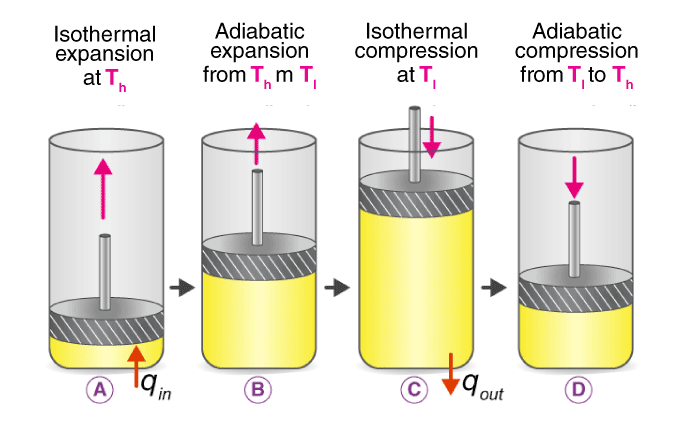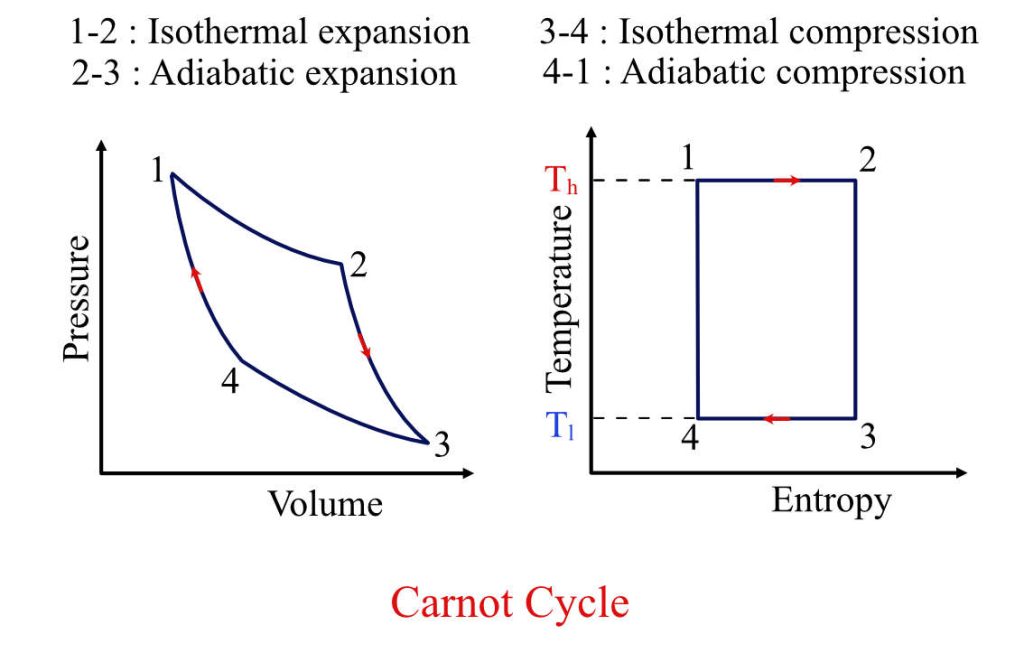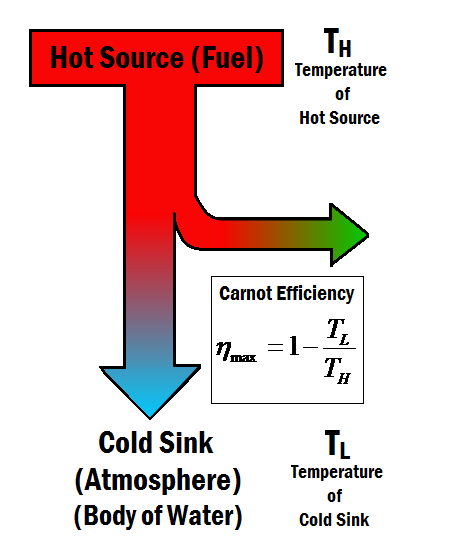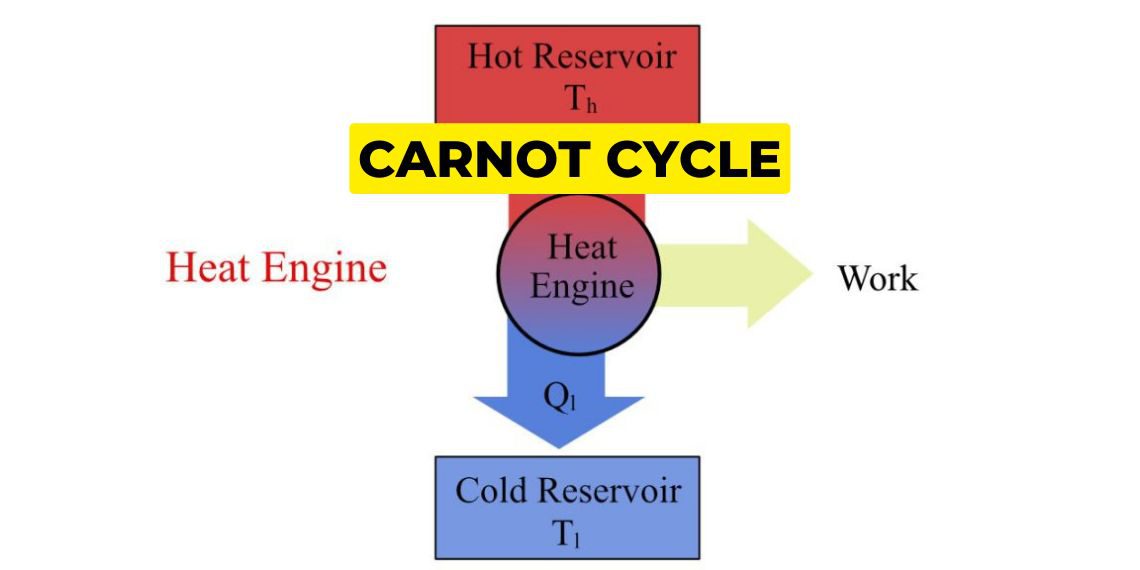What is Carnot Cycle?| P-V diagram | Process | Efficiency | Application
The Carnot cycle is an ideal reversible closed thermodynamic cycle consisting of four processes.
1. Isothermal expansion (1-2)
2. Adiabatic expansion (2-3)
3. Isothermal compression(3-4)
4. Adiabatic compression (4-1)

The Carnot cycle demonstrates the maximum possible efficiency that a heat engine can achieve between two temperature extremes. But since isothermal compression is an extremely slow process this cycle is not practically possible.
Although no real engine perfectly follows the Carnot cycle, it serves as an essential benchmark for evaluating the performance of real heat engines and offers insights into the maximum efficiency limits in thermodynamic systems.

Efficiency of Carnot cycle:
The Carnot cycle’s efficiency is given by the formula:
Efficiency = (T1 – T2) / T1 where T1 is the temperature of the heat source (in Kelvin), and T2 is the temperature of the cold reservoir (in Kelvin).
The efficiency of the cycle is independent of the working substance used in the engine and depends only on the temperatures of the heat source and the cold reservoir. It represents the maximum possible efficiency that any heat engine operating between two given temperature limits can achieve.
The Carnot’s cycle efficiency can be improved by increasing the temperature of the heat source or decreasing the temperature of the cold reservoir. However, the efficiency cannot exceed the Carnot efficiency limit, and any heat engine that violates this limit would violate the second law of thermodynamics.

Application of Carnot cycle:
The Carnot cycle is a theoretical thermodynamic cycle that describes the most efficient possible engine cycle using a heat engine. While the Carnot cycle is a theoretical concept, it has practical applications in a variety of fields, including:
Power Generation, Refrigeration and Air Conditioning and Heat Pumps.
Note:
If you want to learn more about this topic, we suggest checking out our Combo package with the given link https://www.merchantnavydecoded.com/courses/c/ . It’s a great way to dive deeper into the subject through video explanations. This package covers all the important details and presents them in an easy-to-understand format. Watching the videos will help you grasp the topic better and make learning more enjoyable. So, we highly recommend giving our Combo package a try to enhance your knowledge on the subject.
Disclaimer :- The opinions expressed in this article belong solely to the author and may not necessarily reflect those of Merchant Navy Decoded. We cannot guarantee the accuracy of the information provided and disclaim any responsibility for it. Data and visuals used are sourced from publicly available information and may not be authenticated by any regulatory body. Reviews and comments appearing on our blogs represent the opinions of individuals and do not necessarily reflect the views of Merchant Navy Decoded. We are not responsible for any loss or damage resulting from reliance on these reviews or comments.
Reproduction, copying, sharing, or use of the article or images in any form is strictly prohibited without prior permission from both the author and Merchant Navy Decoded.


